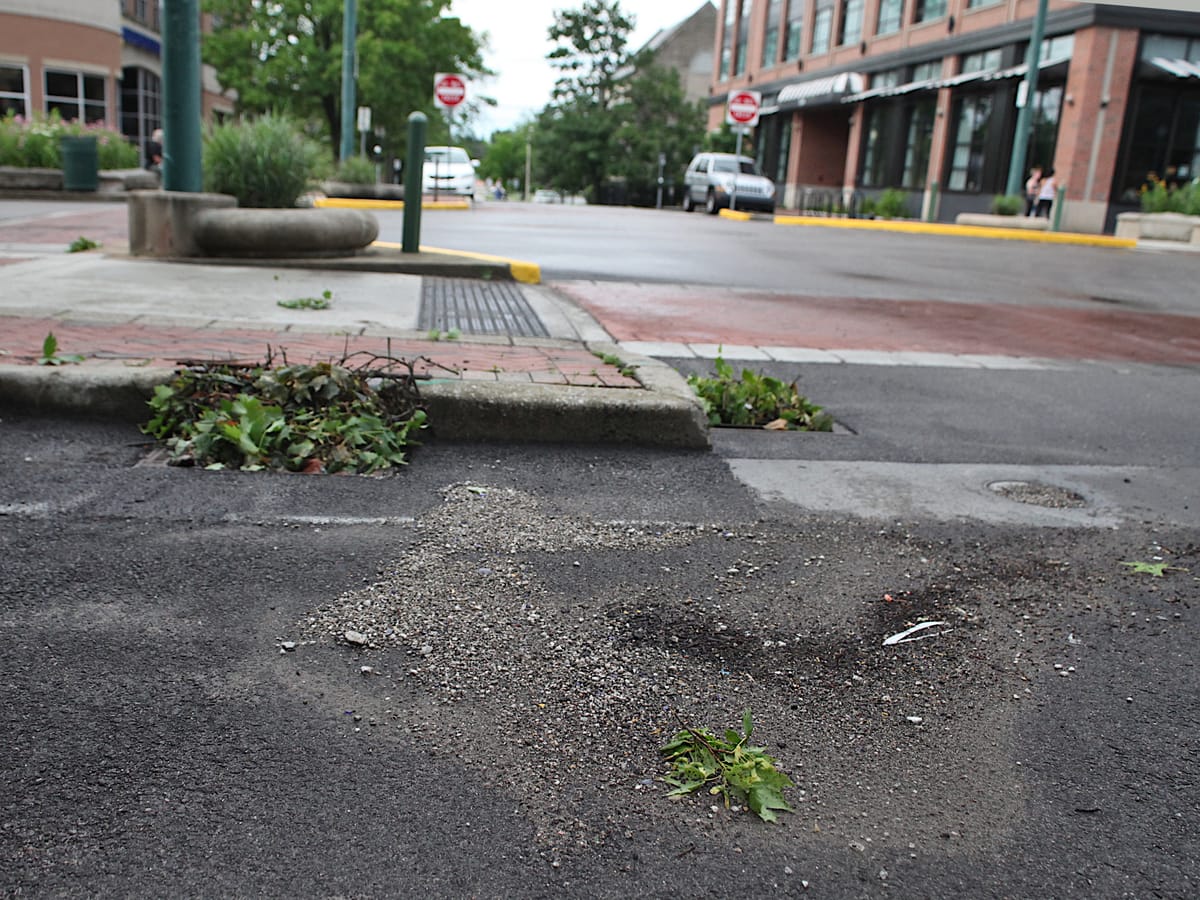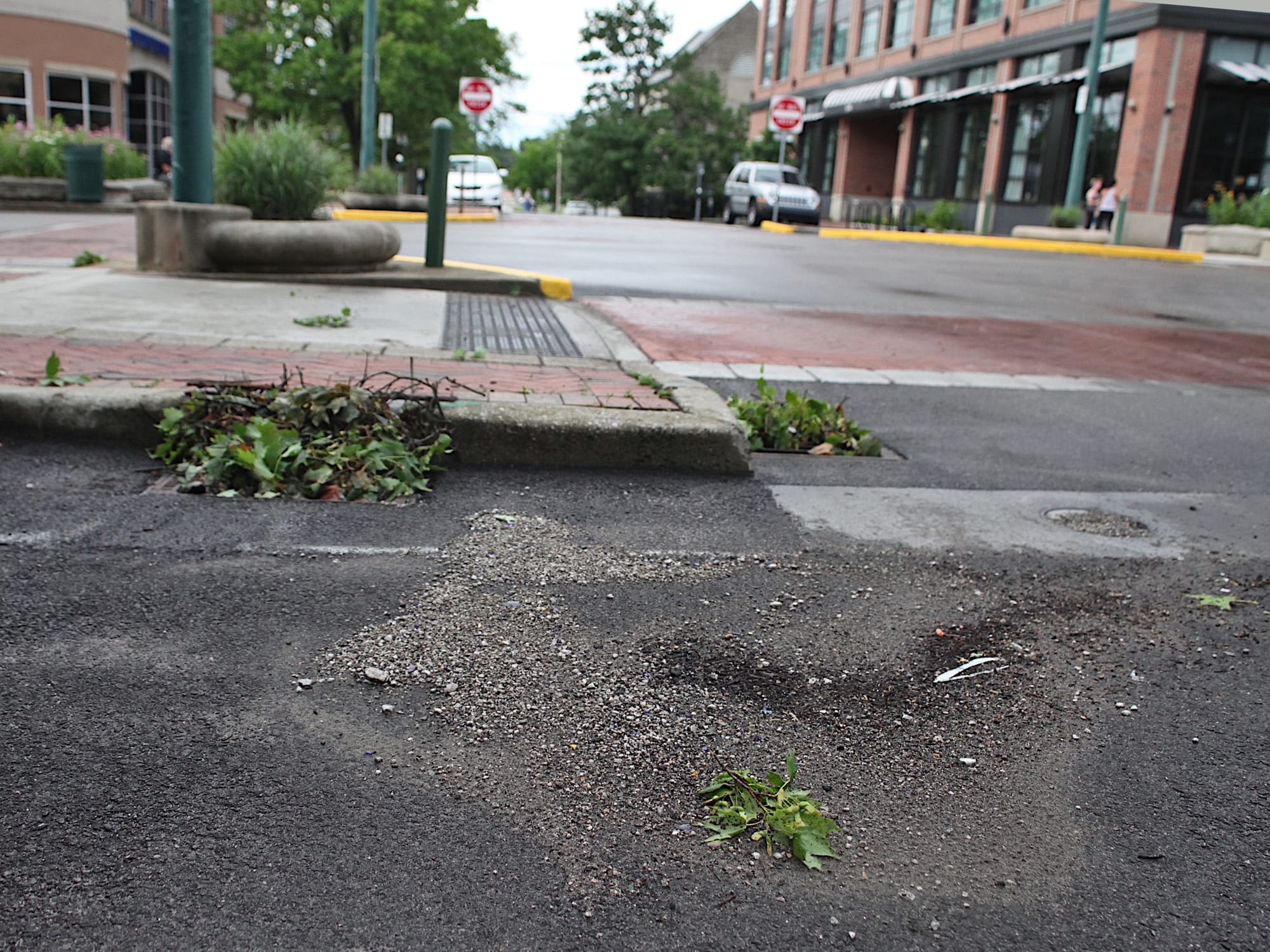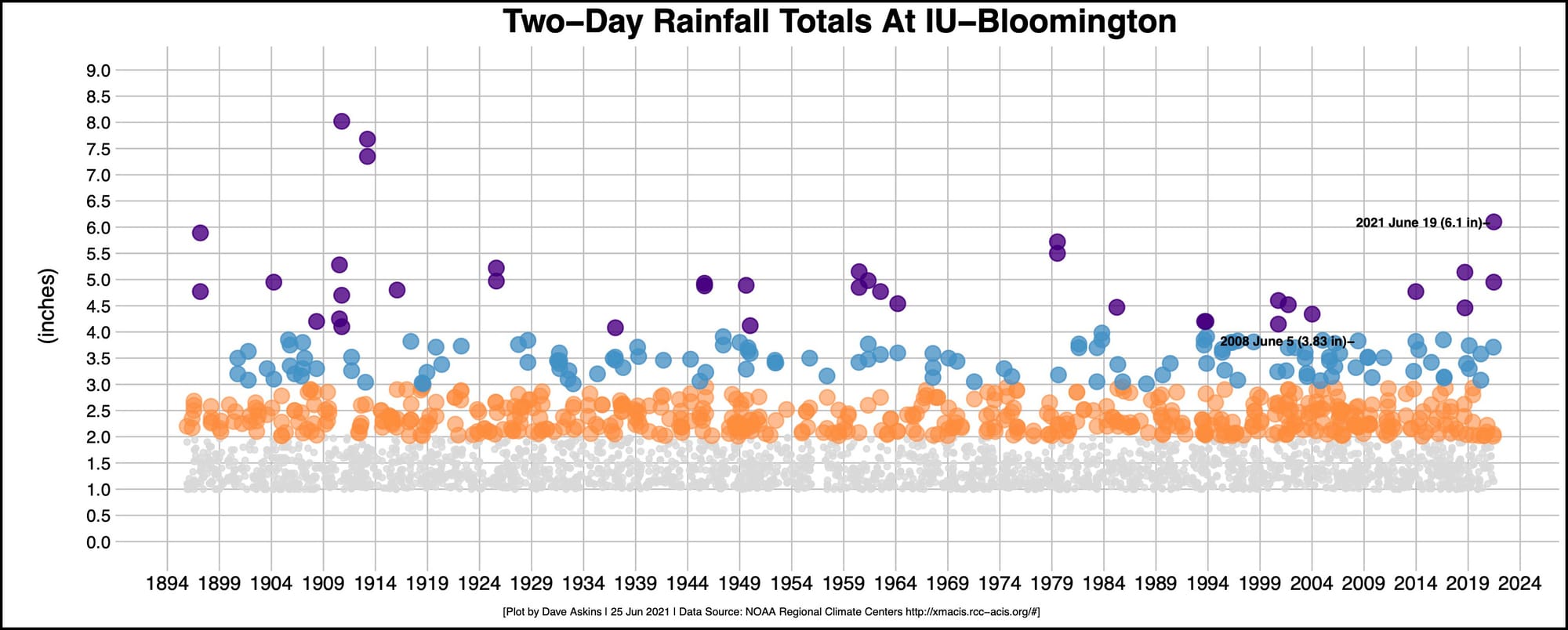2008 versus 2021: Last weekend’s Kirkwood flooding not due to clogged storm drains, CBU reports



When waist-deep water filled the intersection of Dunn Street and Kirkwood Avenue last weekend, it reminded some Bloomington residents of similar flooding in June of 2008.
In 2008, the city of Bloomington utilities (CBU) blamed the high water in part on clogged storm drains. A June 10, 2008 news account from the Herald-Times about the Kirkwood floods stated, “Street inlets clogged with debris were a culprit, blocking water from draining into the system where it belongs, rather than sloshing on the streets.”
That was not the case for last weekend’s flooding, according to CBU’s director of transmission and distribution Brandon Prince.
At the meeting of the utilities service board on Wednesday, chair Jean Capler asked specifically about clogged storm drains as a contributing factor to last weekend’s flooding.
Prince told the board CBU had around 10 people out in the field on Saturday and Sunday. “Primarily, we really didn’t see a clog issue,” he said.
When the water started to recede, blocked drains became “a bit of an issue,” Prince said. That meant CBU crews did clean a lot of inlets in those two days, Prince said, adding that most of the inlet clearing came on Sunday.
Responding to Capler’s query, Prince said, “To answer your question,…we really can’t see how clogged inlets really contributed to the problem.”
The potential for clogged drains to be problematic—specifically those caused by cicada carcasses—was highlighted in a press release from CBU the day before the heavy rains hit. “With the completion of the insects’ life cycle over the next few weeks, storm drains, gutters, and downspouts may become clogged,” the press release stated.
The press release from CBU encouraged residents to “keep an eye on stormwater infrastructure at their home, business, and around town.” The press release encouraged residents to use the city’s uReport system, if they saw stormwater inlets clogged with cicadas or other debris.
Storm drains can become clogged as the stormwater drags debris towards drains, even if they were not clogged at the start. While the B Square was on the scene at Grant and Kirkwood, on the night of the flooding, four firefighters arrived on foot with long poles, apparently to give the storm drains a poke.
Before the firefighters took any action, The B Square retreated briefly to the overhang of the Monroe County Public Library and was not able to see what specifically the firefighters did. But about 10 minutes later, the water level of the intersection had dropped significantly.
The two-day total of 6.1 inches last weekend made it the third-worst storm in the history of the Indiana University campus weather station.
The two-day total that caused the Kirkwood flooding in early June of 2008 was less: 3.83 inches. But according to the H-T’s report, an inch of that rain fell in just 10 minutes.
In 2008, the analysis of the flooding as caused in part by storm drain clogs—as opposed to insufficient capacity of the underground storm sewers—came in the context of the so-called “Big Dig” project. That project was done a few years earlier, in the year 2000. The “Big Dig” was supposed to alleviate flooding problems.
At the time, the “Big Dig” was described in Herald-Times reporting like this: “Workers will open a 30-foot-wide trench in the road—one section at a time—as they replace the storm sewer tunnel from the Kirkwood and Dunn intersection up Dunn to Sixth Street.”
The Herald-Time reporting described the “Big Dig” as a $2.8 million project. In today’s money that would be about $4.37 million.
One of the complaints from Kirkwood merchants about the flooding in 2008 stemmed from the fact that a few years earlier they had endured a summer of construction for the “Big Dig” project—but the work did not appear to solve the problem.
The same kind of complaint surfaced on Monday morning at a meeting of merchants at People’s Park, which was attended by CBU director Vic Kelson, among other government officials.
Kelson described how the current Hidden River project will upsize the middle section of the underground culvert, which leads the Campus River from Dunn Meadow at Indiana Avenue to 1st Street and College Avenue, where the waterway re-emerges above ground.
Other projects are planned as well, including one to increase the size of the inlet at 6th Street and Indiana Avenue, Kelson said.




Comments ()